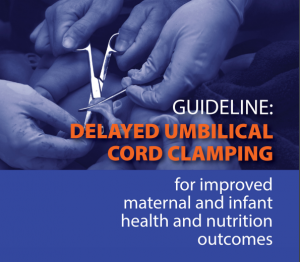
This guideline is a derivative product from existing World Health Organization (WHO) recommendations on umbilical cord clamping for improving maternal and infant outcomes. The optimal timing of umbilical cord clamping has been debated in the scientific literature for at least a century, and the timing of cord clamping continues to vary according to clinical policy and practice. “Early” cord clamping is generally carried out in the first 60 seconds after birth (most commonly in the first 15–30 seconds), whereas “delayed” (also referred to as “late”) cord clamping is generally carried out more than 1 min after the birth or when the umbilical cord pulsation has ceased. For the mother, delayed cord clamping is one of the actions included in a package for reduction of the risk of postpartum haemorrhage.